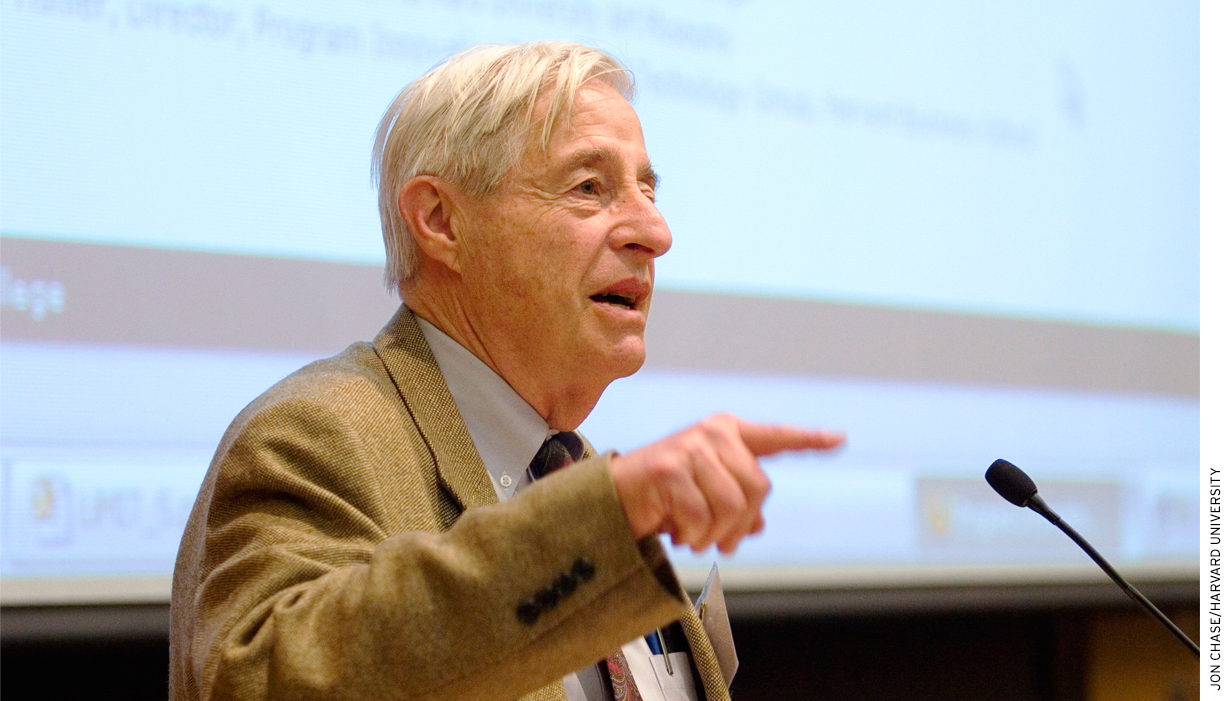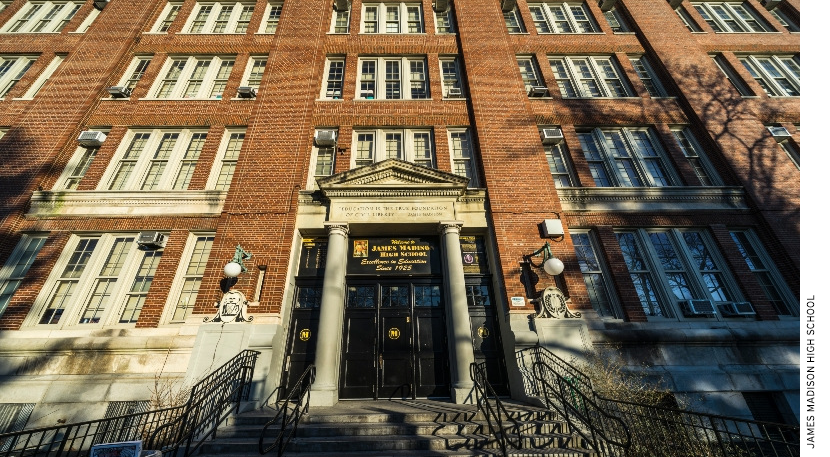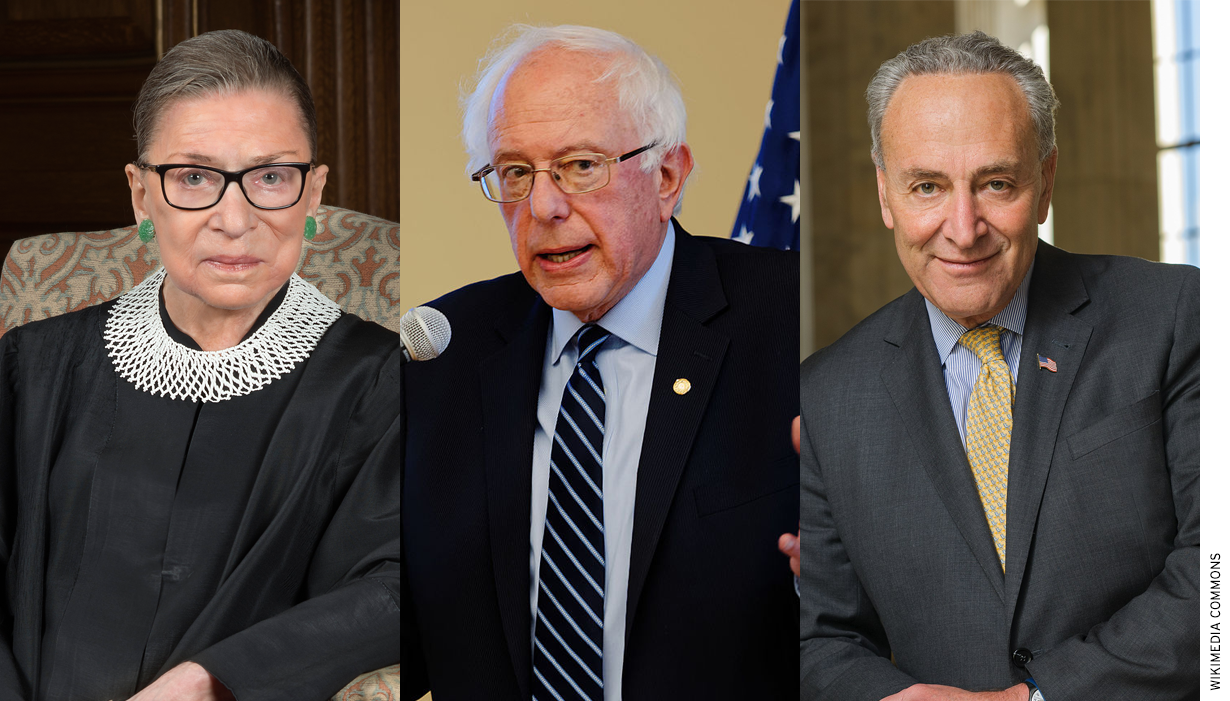
The recent death of the distinguished political scientist Sidney Verba will be an occasion to reflect on his contributions to the field of political science and to Harvard University, where he taught for 35 years, was director of the university library, and was otherwise an active and involved citizen.
What caught my eye, though, was where he went to high school.
Verba, it turns out, was a graduate of James Madison High School in Brooklyn, New York. So is Supreme Court justice Ruth Bader Ginsburg. And Democratic presidential candidate Bernie Sanders. And the Senate minority leader, Charles Schumer. And even a former Republican senator from Minnesota, Norm Coleman.
At least six Nobel laureates also attended the school: Gary Becker and Robert Solow in economics, Arthur Ashkin and Martin Perl in physics, and Baruch Blumberg and Stanley Cohen in medicine.
The list of luminaries raises the question of whether the accomplishments were the product of something that happened at this public school itself, or whether the individuals would have been equally professionally successful had they gone to school somewhere else. To try to find an answer, I spent some time over the past week talking to Madison graduates and reading the high school’s alumni newsletters.
“The questions you are asking are the questions that we all ask each other. I don’t know who really has the answers,” said Judith Naomi Fish, who graduated in 1964 and who has written a series of articles about the school’s history for its alumni newsletter.
The secret doesn’t seem to have been any of the obvious factors. It wasn’t a particularly wealthy group of students, like, say, those who attend Phillips Andover Academy or other private high schools that have produced lots of prominent professionals.
“An ordinary middle- and lower–middle-class high school,” is how Verba described it in a 2011 interview with the Annual Review of Political Science.
It was, Fish said, “just a district school,” not a magnet school and not an exam school that required for entrance a high score on a competitive standardized test.

The key to achievement was not an unusually long school day, either. Martha Weinstein Alpert, who graduated in 1957, recalled that in her era, the school was running in two shifts, with juniors and seniors finished by noon and clearing out to make way for freshmen and sophomores, who went to school in the afternoon.
Nor was the success attributable to the spaciousness of the facilities or to small class sizes. Alpert remembered classrooms so crowded that she sometimes had to share a seat with another student. Other children sat on windowsills or radiators.
There were certainly some excellent teachers. Blumberg, in a video interview, remembered “extremely high academic standards” and noted that the Great Depression had caused some college-level teachers to take high school jobs. “Many of our teachers would have in other times taught at university. Quite a few of them had Ph.D.’s…Our chemistry teacher in high school had a doctoral degree, had done research, was really a wonderful teacher as well,” Blumberg said.
The school’s site in New York City, a cultural capital, also made it easy for the school to attract teachers with second careers as writers or musicians.
Ambassador Herbert Okun, a career diplomat who graduated from Madison in 1947, recalled in an interview with the school’s alumni newsletter that the faculty “took learning very seriously.” As a prize for doing well in a freshman civics class, the teacher arranged for young Okun to administer the oath of citizenship to “a group of immigrants in the courthouse in downtown Brooklyn.”
Fish and Alpert also emphasized another factor: parents. “There was something very special going on with the families,” Fish said, crediting, “parents that put a strong emphasis on education.”
Alpert said that in her era, the students were about 90% Jewish and included many children or grandchildren of immigrants. During the 1930s, because of overcrowding in the high school building, freshman classes met at an “annex” at a nearby Reform synagogue, Temple Ahavath Sholom.
“The parents, the homes that kids came from, education was stressed,” Alpert said. “Mostly Jewish parents stressed education, education, education.”

What would have happened to these students had they gone to another school is a counterfactual experiment the results of which can’t be known. We do know, though, the results of the school with a different student and parent population. That is what happened at the school beginning in the late 1960s, when changes both to New York City overall and to the city’s high-school-assignment policies meant, as Alpert put it, “the demographics of the school changed.”
So too did the achievement level of the graduates. The school maintains a “wall of distinction” for graduates with noteworthy accomplishments. Honorees in addition to those already mentioned include the historian Robert Dallek, the television Judge Judy Sheindlin, the test-preparation company founder Stanley Kaplan, and singer-songwriter Carole King. “We are looking for graduates from the 70s, 80s, and 90s. We are looking for them,” Alpert said. “I don’t know what it is. It dropped off.”
The school still has lively extracurricular activities — the football team won a league championship in 2018, and the mock trial team were state champions in 2010. The city’s most recent “school quality snapshot” reports that 82% of students graduated within 4 years, with 57% of graduates continuing their studies at either two-year or four-year programs offered by the City University of New York. Of 819 seniors in the school, 43 successfully completed an Advanced Placement calculus course, and 31 successfully completed an Advanced Placement government course.
Alpert, the president of the school’s alumni association, now lives in the suburbs, but returns to the school often as a volunteer. She stresses that she’s proud of the school today, too, even after all the change. She said, “I love these kids, but it’s very different.”
Ira Stoll is managing editor of Education Next.
This article appeared in the Winter 2021 issue of Education Next. Suggested citation format:
Stoll, I. (2021). How One “Ordinary” Brooklyn High School Produced Six Nobel Laureates, A Supreme Court Justice, and Three Senators. Education Next, 21(1), 95-96.


